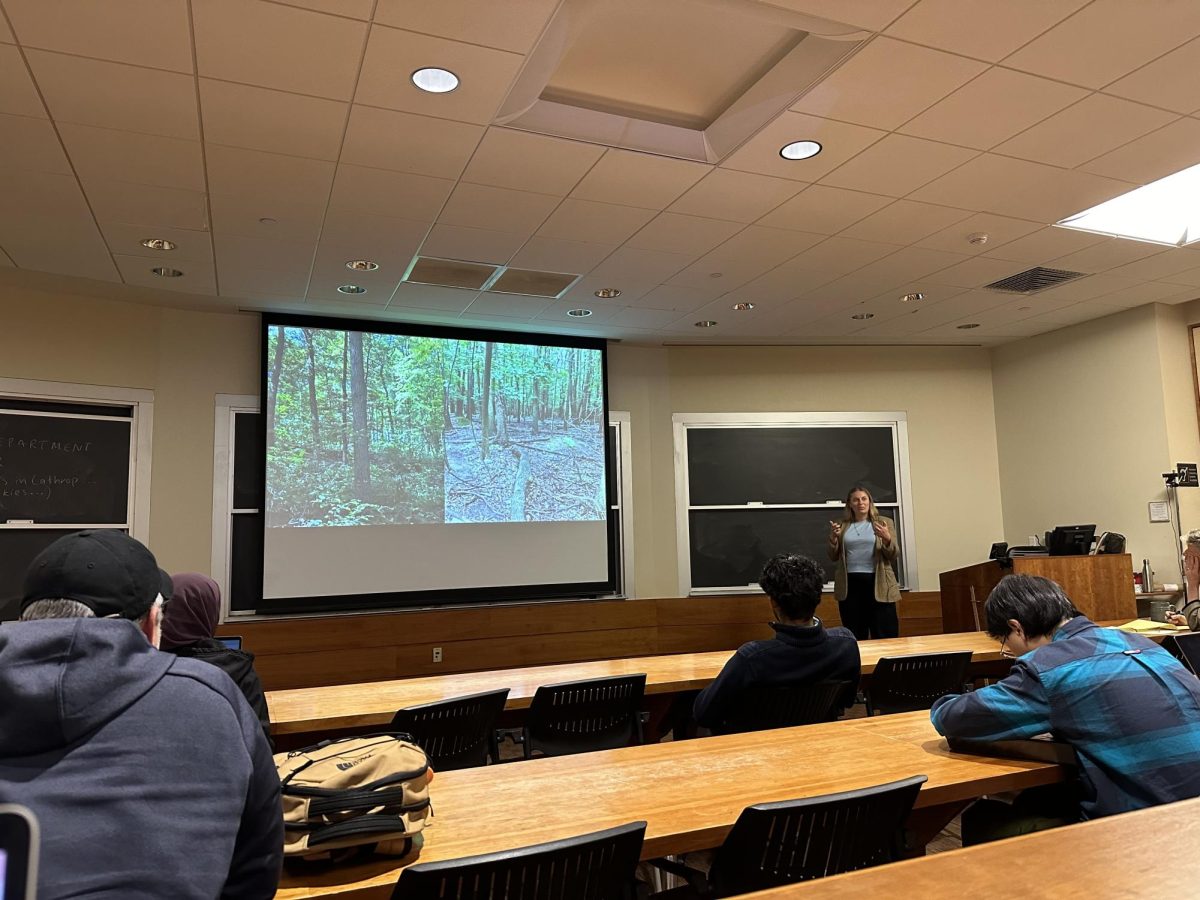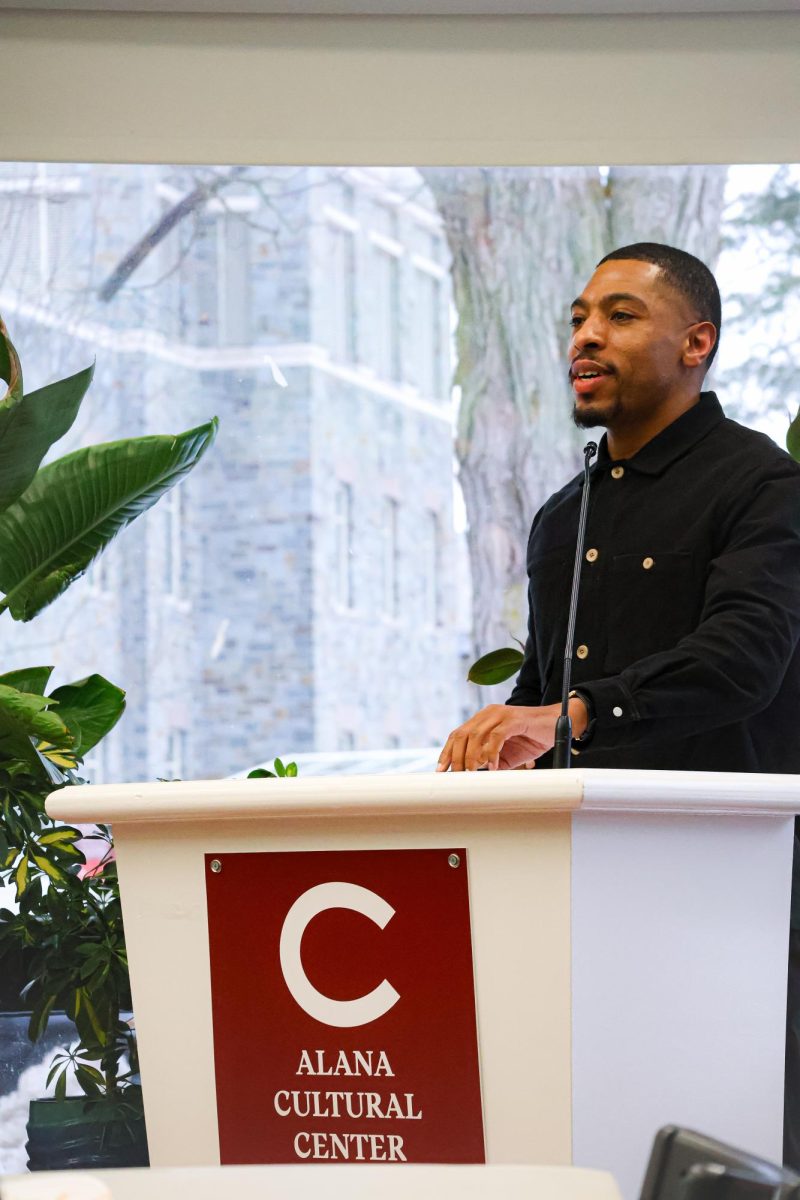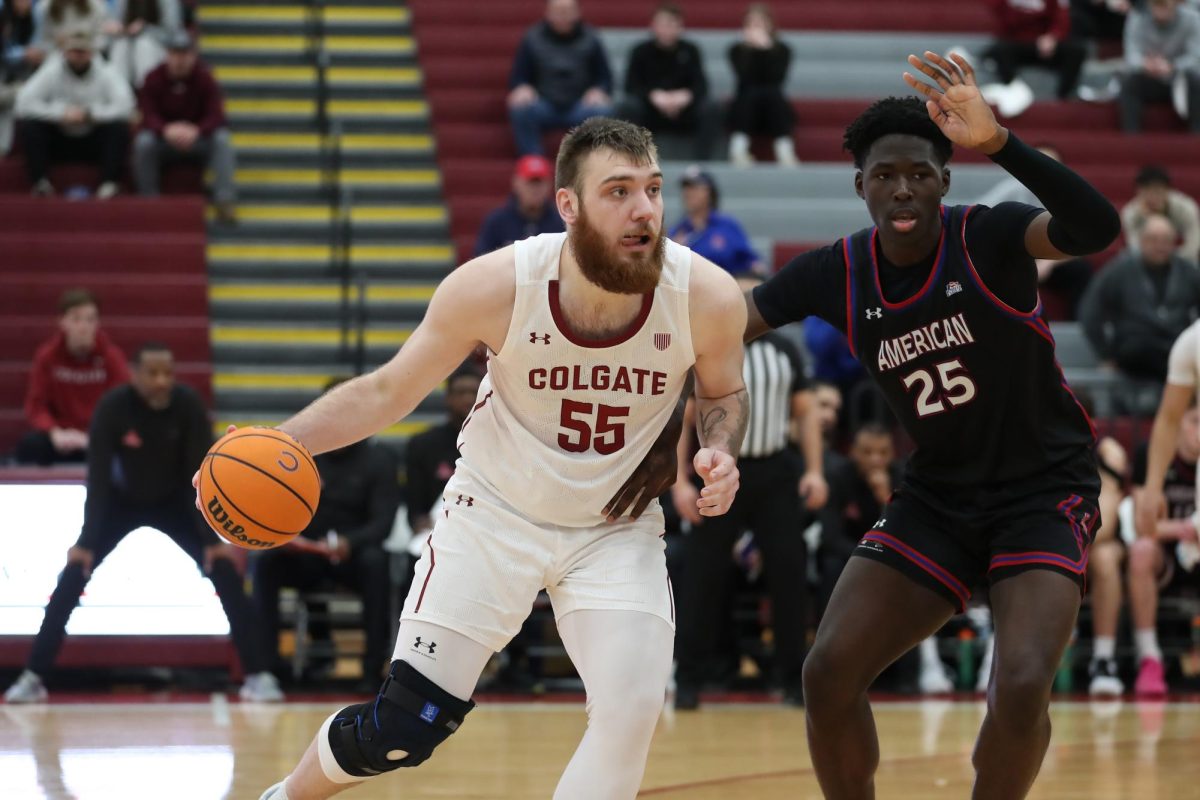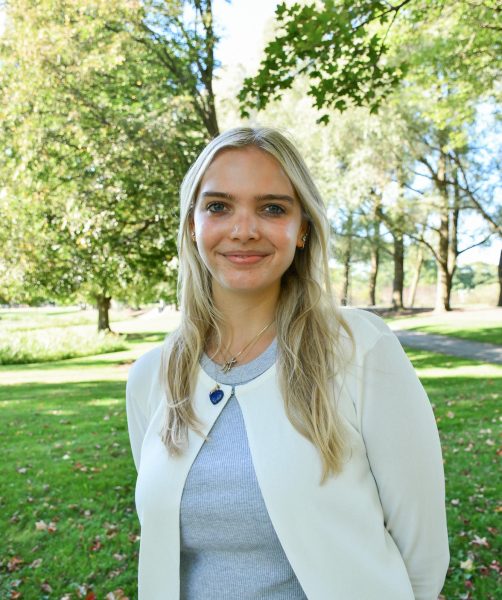Dr. Annise Dobson visited Colgate University for a lecture — titled “Coexisting with Change: Adaptive Strategies for Northeastern Forest Understory Communities” — on Tuesday, Nov. 2. Dobson is a postdoctoral researcher at Yale University, focusing on forest conservation, specifically in urban areas. Her current work, and the topic of her lecture, explores how different stressors affect plant communities within urban areas such as New York City.
“People will often think of places like New York City as being just sort of an urban concrete jungle,” Dobson said. “But if you take together the street trees, the landscaped areas, and the natural areas, it’s about 40 percent green, which is pretty surprising.”
In her lecture, Dobson extensively discussed the specific stressor of jumping worms. Her work specifically targets forest areas in New York City because of how phenomenons occurring there can be used as indicators of spreading trends.
“So when [patterns of invasive species and stressors] show up, they’ll often show up in New York City for the first time,” Dobson said. “So it can be really useful to look there [to know] what’s going to be relevant to other forests.”
By studying different sites across the city, Dobson found some interesting data including how, with the presence of jumping worms, there are declines in plant diversity and percentage of native plant coverage. Senior Alice Hurst attended the lecture and was especially interested in the topic because her research at Colgate is about stressors for worms.
“I actually got to speak with the speaker beforehand because I’m also working with earthworms for my senior thesis,” Hurst said. “I’m looking more into environmental changes and how that impacts earthworms and earthworm species, so I thought it was interesting how some of that stuff I knew already connected a little bit with my own research. I was able to connect with the speaker and the topic.”
Senior Kyleigh Frank, who has worked with Dobson previously, found the lecture to be intriguing, as it placed her own research in a new context.
“Given that my own senior research is on the dispersal of jumping worms in particular, I always enjoy hearing the broader implications of their spread,” Frank said. “Dr. Dobson’s lecture related this to urban landscapes, a field of research I was previously unfamiliar with. It was really interesting to see my research applied in a way I hadn’t seen before.”
Dobson also included other stressors in her lecture, such as deer browsing. This provided students like Hurst relevant ideas to consider as they continue with their own research.
“I’m focusing more just on earthworms, so it’s interesting to think about how there’s all this other stuff going on,” Hurst said. “[Other stressors] are not something I’m considering in my own research, but definitely interesting to think about because we have deer populations and other invasive species. It’s interesting how the earthworms and other stressors could be affecting our forest.”
In exploring solutions to help protect urban forests from different stressors, Dobson hopes to continue her research to find solutions to manage the effects and spread of jumping worms.
“Some of these New York City plants have been living with deer, jumping worms and invasive plants for 70 years — several generations in some cases,” Dobson said. “I’m hoping to transplant them around to see if there’s any kind of adaptation to the fruits to be able to withstand these different stressors.”
















